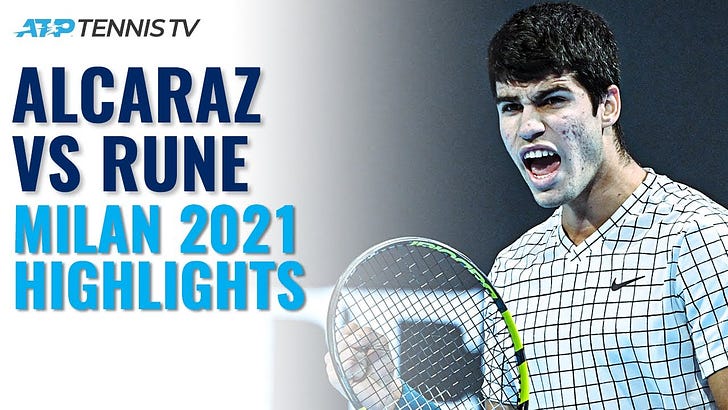There are two 18-year-olds currently in the top-100 of the ATP rankings. One of them is fast becoming a household name in Carlos Alcaraz. I suspect Holger Rune will become well known by year’s end also. The Danish teen had a somewhat slow start to the year, but showed his level at Indian Wells last month, making the second round as a qualifier and pushing sixth-seeded Matteo Berrettini in a close three-set encounter. Last week he won the Sanremo Challenger title—his fifth Challenger title to date—and went on to win his Monte Carlo qualifying match that same afternoon. In the main draw he pushed fellow Scandinavian and top-10 player, Casper Ruud, and had chances in both sets. Last year he took a set off Djokovic at the US Open. While the breakout performance hasn’t occurred yet, the level he has produced in these big encounters makes me think Rune can make it happen as early as this clay season.
A junior Roland Garros champion from 2019, Rune has not shied away from stating his ambitions. Two years ago, ranked 550, he had this to say1:
"Rafael Nadal is really inspiring and so bold a character. I work every day to be able to be as good as him. I'm not at his level yet. There's still some way to go, but I believe I can beat his record."
Teenage dreams aside, I think Rune has the game to be a top-10 player and may develop into a slam threat if he can physically mature (he started to cramp in the third set at last year’s US Open after taking the second set off Djokovic). Perhaps the biggest difference between Rune and Alcaraz lies in their physicality; Alcaraz has that in spades, whereas Rune still has some development to do to beef up his serve and endurance. Last year they squared off at the ATP NextGen Finals—an end-of-year tournament for the top 21-and-under players—with Alcaraz winning that match, though not without some stiff resistance from Rune, especially in the first set. The forehand quality of both can be seen in the highlights below.
What I love about Rune’s game is the simple and clean technique he uses on his forehands and backhands. His forehand sets up very early, and he gets the racquet-tip high with an extended wrist. In the video below take note of how well he drives his legs and hips through the ball, something I’ve noted in the Alcaraz forehand as well. For me, this is the easiest way to create a controlled and powerful swing. One that can be shortened effectively for blocks and returns, or taken higher to generate more drop and subsequent racquet head speed when time is granted. I see technical similarities in Rune’s forehand with that of del Potro’s (although make no mistake that del Potro’s eastern-gripped hammer was far bigger) and I think long-term it will be a great shot.
The backhand is also a very simple and effective swing. Rune sets up with the racquet-tip high and drops it into the ‘slot’—where the racquet head runs down the left leg—before being pulled up and through the ball; a characteristic of many great two-handed backhands.
While his serve is a little underpowered, I can see Rune developing into the mold of a David Ferrer if he can build up the leg strength; by all accounts the mind is certainly willing and focused to put in the work, and he seems to relish the fight. This week Rune starts in the main draw of the Belgrade 250 and takes on Cristian Garin in the first round.
Off the back of his Challenger win and Monte Carlo effort, I think he will be tough work for anyone in this section of the draw. Play for the bottom half of the draw is slated for Tuesday.
https://www.sportskeeda.com/tennis/news-some-way-go-i-believe-i-can-beat-rafael-nadal-s-record-world-no-2-junior-holger-rune



